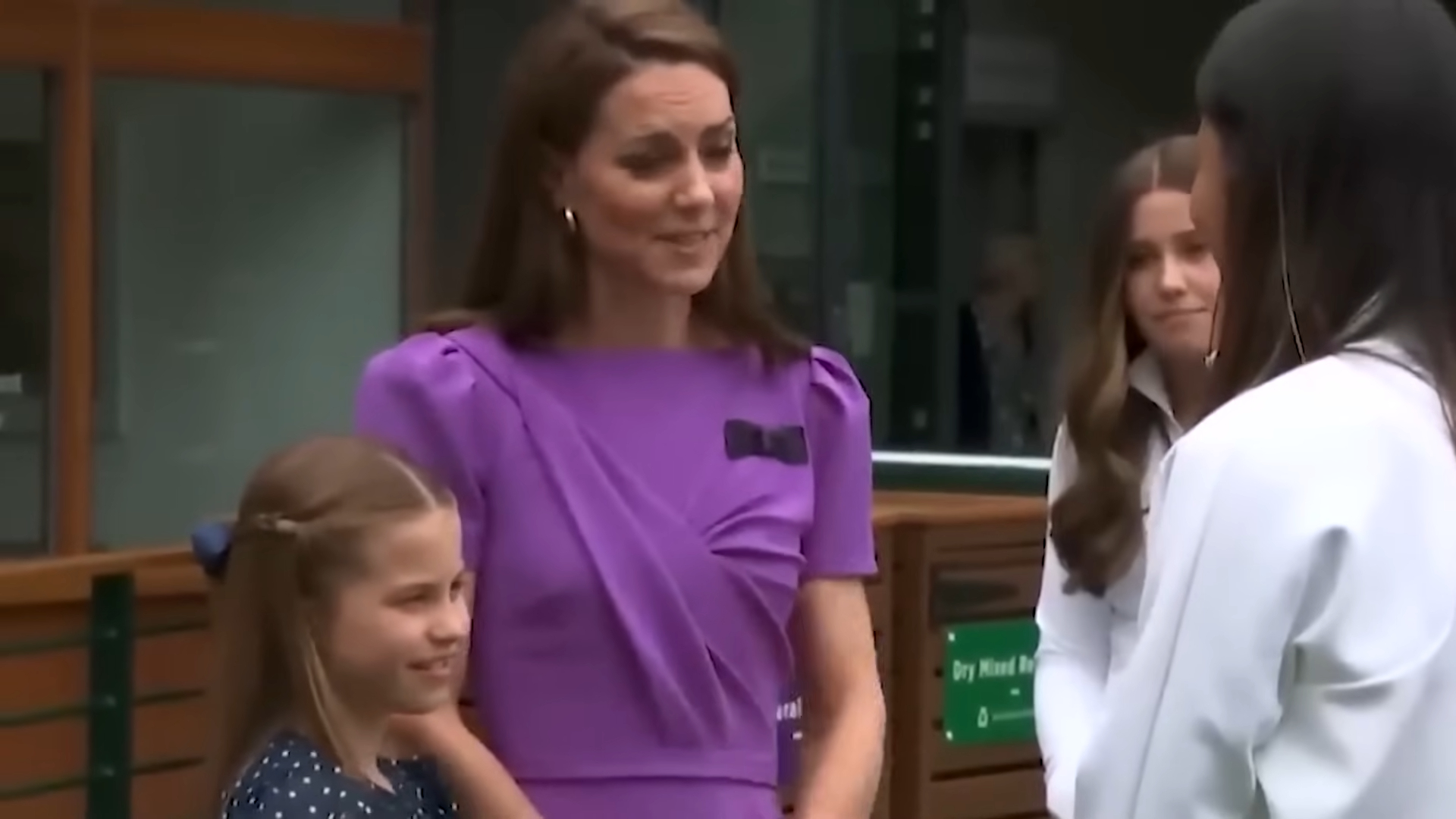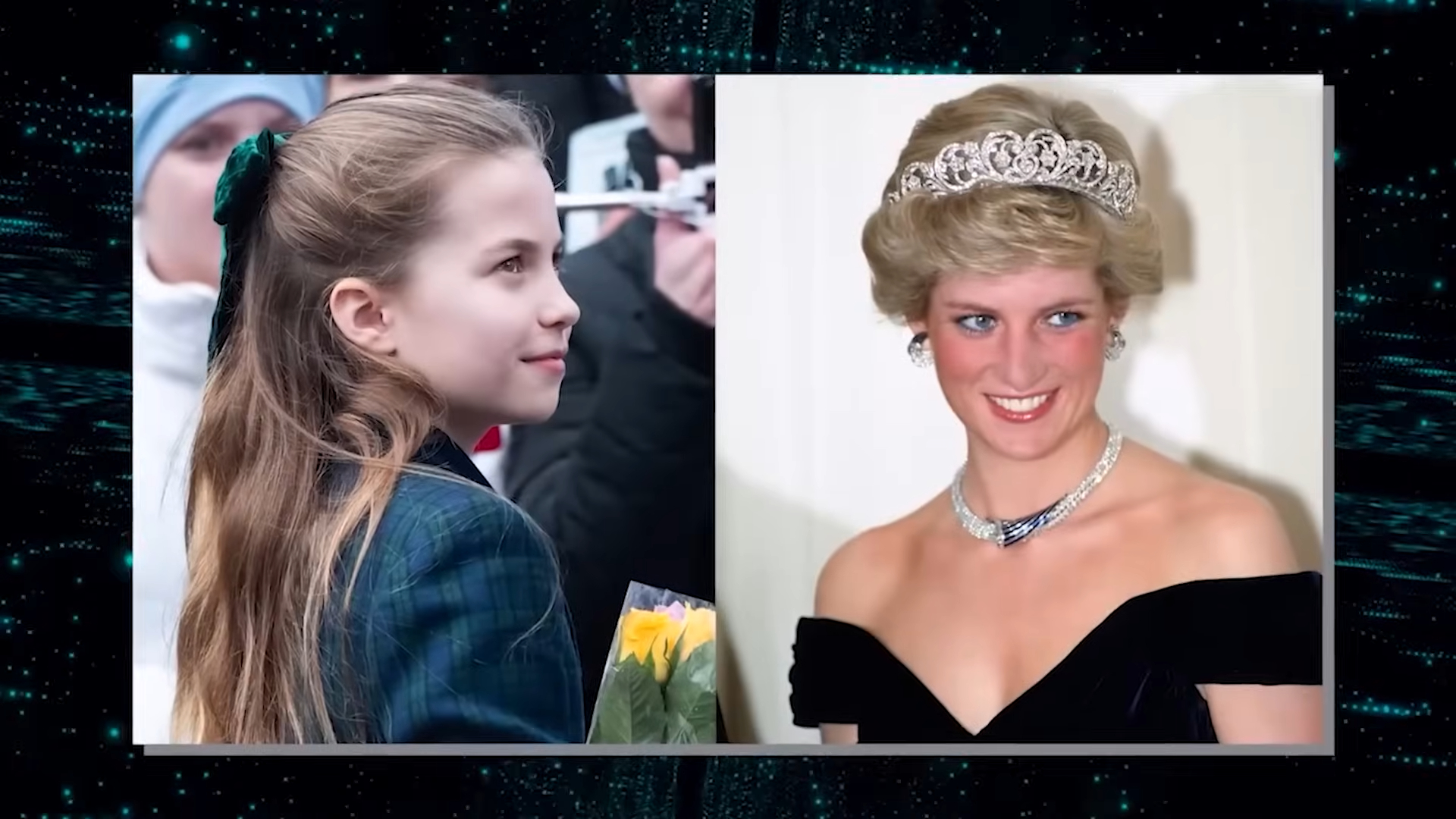For some time, the debate about climate change, growing environmental problems, and pollution has been on my mind.
I have always cared deeply and watched closely what others do.
In recent years, formal royal declarations—typed in sharp font on palace letterhead, bearing the royal crest—have become the norm.

Published precisely at 10 a.m.
London time, most expected a typical update: perhaps a sponsorship handover, a ceremonial appearance, or simply another dull entry in the Windsor calendar.
However, what people read that morning thundered through the monarchy.
Her Royal Highness Princess Charlotte of Wales had been formally granted the courtesy title of Duchess of Edinburgh.
Social media exploded, the press rushed to analyze, and royal commentators scrambled to explain the historical significance of the title.
For decades, it was assumed this title, previously held by Prince Philip, would descend to Prince Edward.
Instead, it was firmly placed in the hands of a bright-eyed, elegant 10-year-old girl—the granddaughter of Princess Diana.
While much of the world applauded this bold and modern gesture as a clear investment in the monarchy’s future, not everyone inside Buckingham Palace shared the enthusiasm.
In fact, a royal insider summed up what happened behind closed doors in three words: Camilla went mad.
The Queen Consort, who long worked to secure her family’s status within the royal line, apparently exploded with anger upon hearing the news.
Not because she disliked Charlotte, but because the decision drew a hard line between the royal and non-royal, leaving her own family out.
Elisa Lopez, Camilla’s granddaughter, had previously stood proudly beside her at royal engagements.
The public had seen her smiling at weddings and waving at Jubilee parades.
Despite Camilla’s ascent to the throne as queen, her grandchildren remain commoners—without titles, roles, or futures in the institution.
Camilla reportedly felt humiliated upon learning that Charlotte was receiving a title of great historical value.
“They’ve frozen out my family,” she was heard saying.
“They’ve made it clear we will never be one of them.”

This announcement was not merely ceremonial; it was a strong message from the highest royal hierarchy about who matters in the next generation of the crown.
For Camilla, it meant more than a title—it was a public rejection, a royal slap in the face.
As Westminster bells tolled and Charlotte’s name trended worldwide, another kind of shock echoed through palace halls—the fury of a queen consort suddenly realizing the future of the monarchy belonged to Diana’s granddaughter, not hers.
When Princess Charlotte was officially named Duchess of Edinburgh, it was more than a symbolic gesture.
It was a seismic shift in royal tradition, sending a clear message from the palace about who truly belongs to the future.
For decades, the title had been reserved publicly for Prince Edward, the youngest son of Queen Elizabeth II and Prince Philip.
It was widely assumed that Edward would inherit the dukedom after his father’s death.
However, the monarchy has evolved, as have the calculations behind each decision.
In a surprising deviation, the title bypassed Edward entirely.
Instead, it was granted to Charlotte, the second daughter of Prince William and Catherine, Princess of Wales.
Charlotte is only 10 years old but now holds a title historically associated with continuity, royal duty, and honor.
This was a defining moment on her path toward a key role in the new era of the crown.

Why Charlotte? Why now?
Insiders believe the decision was carefully planned by King Charles I, Prince William, and senior advisers who recognized the strategic importance of granting Charlotte more than ceremonial status.
In a monarchy constantly modernizing, symbolism is everything.
Charlotte represents the best of both past and future.
She is the granddaughter of Princess Diana, one of the most beloved figures in modern royal history.
She is also the daughter of Kate Middleton, the most admired and revered royal woman since Diana herself.
Charlotte embodies purity, grace, and the ideal image of a young, contemporary princess.
She has been in the public eye since birth, showing composure beyond her years and a natural charm that wins hearts.
Most importantly, Charlotte’s place in the line of succession is unusual for a female.
Thanks to the 2013 Succession to the Crown Act, she will not be displaced by any younger brother.
This historic change allows her to retain her position as fourth in line to the throne, behind Prince George and ahead of Prince Louis.
Granting her the Duchess of Edinburgh title signals that the monarchy is preparing her for something far greater than mere royal appearances.
Some sources believe this step lays the groundwork for her possible future elevation to Princess Royal—a title historically reserved for the monarch’s eldest daughter.
“They are preparing Charlotte,” a senior royal adviser confidentially said.
It’s no longer about ribbons and smiles; she is being groomed to shoulder part of the monarchy’s legacy.
Charlotte has attended important royal ceremonies with dignity from a very young age.
Whether her precise salute at Queen Elizabeth II’s funeral, her polished presence at the Platinum Jubilee celebrations, or her calm confidence at Trooping the Colour, the world has witnessed her development not only as a princess but as a pillar of the monarchy’s future image.
Her new title consolidates her role, granting her status, visibility, and weight.
While the public received the change with enthusiasm, not everyone in the royal family viewed it as a cause for celebration.
Behind Buckingham Palace’s gilded walls, some saw the decision as an aggressive political move, placing Diana’s family at the center of the monarchy’s future vision while excluding those without Windsor blood.
For Queen Camilla, it was more than disappointment—it was humiliating.

Her granddaughter Elisa, once proudly present at family gatherings, is now a distant memory.
As Charlotte rises, Elisa remains invisible to the firm.
Camilla, a woman who fought tooth and nail to enter the royal inner circle, finds this pain unbearable.
But the message is clear: this is Charlotte’s moment.
The title represents more than history; it is a crown in waiting, a promise, a signal to the world that the post-Elizabeth, post-scandal, post-Diana monarchy is rebuilding around the House of Wales.
At the heart of it all is a girl with her grandmother’s fire and her mother’s elegance.
Behind the diamond tiaras and meticulously planned photo sessions lies a truth few dare admit: not all royal grandchildren are treated equally.
For Queen Camilla, that fact has become an unbearable thorn, growing sharper with Princess Charlotte’s surprising rise.
Camilla is a grandmother in her own right.
Her biological family, the Parker Bowles line, preceded her cautious welcome into the crown.
She has five grandchildren through her children Tom and Laura, children she adores and who otherwise would be respected members of British high society.
Among them is Elisa Lopez, the bright and beautiful granddaughter who made headlines in 2011 as a flower girl at William and Kate’s wedding.
Dressed in ivory satin and holding Catherine’s train, she was briefly swept into the global royal orbit—a small child at the center of a historic moment.
Camilla saw that moment as a ray of hope, a sign that her grandchildren, despite lacking Windsor blood, might one day sit at the royal table.
But over the years, that hope faded.
Unlike Charlotte, George, and Louis, who are trained from childhood to assume royal roles, Elisa and her cousins have been quietly pushed to the margins—without titles, sponsorships, or protocol standing.
Despite Camilla’s rise to queen, they remain firmly non-royal, and that hurts.
Camilla always believed that once she became queen, her family would finally be taken seriously, said a former courtier.
But the truth is the firm never saw the Shand Parker Bowles line as legitimate royalty.
This desire did not vanish overnight.
It has been a constant, deliberate exclusion hidden behind polite smiles and vague promises.
Invitations to public ceremonies are rare.
Inclusion in official portraits is impossible.
When it comes to royal matters, Camilla’s grandchildren are outsiders looking in through the gates.
Now, seeing Charlotte—a girl barely older than Elisa—receive a title of historic significance has reopened every wound Camilla tried to hide.
According to sources close to the queen, the choice left her deeply hurt—not because she disliked Charlotte but because it served as a public reminder that her lineage will never be considered regal enough.
She supposedly told friends the move was unnecessary, divisive, and deliberately cruel.
“This isn’t about jealousy,” Camilla was quoted at a private event.
“It’s about recognition, respect.
My grandchildren have been treated like ghosts.”
In a family obsessed with image and legacy, exclusion is worse than criticism.
It suggests you were never even noticed.
For a woman who spent decades rising from mistress to queen, the prospect that her own bloodline disappears from the royal narrative is agonizing.
What is even more painful is that Camilla’s grandchildren are charming, well-educated, and fully capable of public life.
Yet capability is irrelevant in a monarchy.
What matters is blood, history, symbolism.
And the symbolism is unmistakable: Diana’s granddaughter now wears a crown while Camilla watches from the sidelines.
No press release will mention it.
No aide will admit it.
But inside the palace, one reality is clear: Camilla may have won the queen’s crown, but her family will never carry the heritage.
Palace halls are accustomed to whispered conversations, hidden expressions, and palpable tension.
But they did not expect the roar of Queen Camilla’s fury echoing through the walls after the title announcement.
According to several royal insiders, what began as a peaceful closed-door discussion soon became one of Buckingham Palace’s tensest private moments since the Diana era.
The setting was simple: a private meeting at Clarence House, discussing public reaction to Princess Charlotte’s new royal title.
But when Camilla saw the headlines—“Charlotte of Wales Named Duchess of Edinburgh, Diana’s Granddaughter Takes Center Stage, Future Queen in Waiting”—something snapped.
She slammed the folder shut.
A visibly shocked aide later explained, “Her behavior changed completely.
It was like watching someone break.”
What followed was a fierce, caustic outburst filled with years of pent-up bitterness.

Camilla accused senior advisers of undermining her lineage, turning the monarchy into a popularity contest, and, most unexpectedly, spitting on everything she sacrificed to get there.
Another witness who wished to remain anonymous said Camilla threw a newspaper clipping into the fire by the fireplace.
It wasn’t just about Charlotte; it was decades of feeling like an outsider, trying to live up to Diana’s legacy only to see her granddaughter crowned by public opinion.
“They erased my family from history,” she was heard shouting.
“This is what I get for sacrificing everything for this family, for Charles.”
Staff were stunned.
Some froze.
A longtime lady-in-waiting quietly left the room, unable to watch the queen break down so humanly and unfiltered.
What shocked them most was not the anger but the suffering—the rare fragility of a woman who had spent decades projecting a cold, serene, untouchable image.
But Camilla was not a queen in that moment.
She was a grandmother mourning the royal destinies her grandchildren would never have.
The worst came when she turned against Charles.
Several sources confirmed she confronted the king directly, accusing him of favoring Diana’s children and yielding to William and Kate’s whims.
Charles, surprised and exhausted after weeks of political tension, remained silent.
That silence only fueled the fire.
“Say something, Charles!” she shouted.
“Did you allow this to happen? Did you let them push my family aside like dust?”
Attendants quickly intervened, calming the situation with polite distractions and gentle redirections.
Camilla excused herself shortly after and withdrew to her private chambers for the rest of the day.
But the damage was done.
By the next morning, news of the queen’s fury had spread through court circles.
Some sympathized; others were discreetly horrified.
Several senior courtiers said they had never seen Her Majesty so unhinged.
Though no formal statement was issued, Camilla’s team’s silence was deafening—a message to those who know how to read between the lines.
The queen’s rage had erupted not on front pages or before cameras but in the golden, guarded heart of the institution.
For those who witnessed it, one thing was painfully clear: this was not just about the title.
It was the story of a woman who, despite wearing the crown, felt she had lost everything.
While Camilla’s fury boiled behind closed doors, one royal member remained serene, elegant, and quietly triumphant: Catherine, Princess of Wales.
She neither boasted nor made statements; she did not need to.
The title granted to her daughter, Princess Charlotte, said it all.
In royal circles, power is not always exercised with force.
Sometimes silence, stillness, or a subtle move behind the scenes changes everything.
And while Camilla spent decades playing the long game to become queen, Kate Middleton has mastered the legacy game.
Behind every royal engagement, every carefully planned portrait, and every touching moment shared with the public, Kate has been playing chess, not checkers.
With a steady hand, impeccable public image, and growing influence over Prince William and King Charles, she has solidified her children’s place at the monarchy’s heart.

Now, Charlotte’s promotion to Duchess of Edinburgh—or any other powerful title the palace deems fit—marks Kate’s final checkmate over Camilla.
This was no accident.
According to multiple internal sources, discussions about the title had been developing for nearly a year.
William reportedly campaigned discreetly, highlighting Charlotte’s rising prominence and the importance of a bold move reflecting a merit-based modern monarchy.
Behind William’s external diplomacy was Kate, the hidden architect of the strategy.
“Kate never asked for anything directly,” said a palace aide.
“She simply made clear through actions, not words, why Charlotte deserved this—and how she achieved it with precision, grace, and patience.”
Kate understood long ago that the people are today’s ultimate source of royal authority.
She didn’t need to disparage Camilla or steal anyone’s spotlight.
She only needed to stand firm and steadily earn the British public’s trust, admiration, and affection.
Polls consistently show Kate as the monarchy’s most admired woman—more than Camilla, even more than the late queen.
With fame comes influence—the kind that whispers in powerful ears instead of shouting.
Every time Kate appeared holding Charlotte’s hand, the public melted.
Charlotte’s flawless curtsies and characteristic Windsor salute charmed hearts.
Kate and her daughter evoked Diana’s grace, rewriting history.
Camilla, on the other hand, has struggled to rebuild her image, still haunted by her past and often seen as the intruder who supplanted Diana.
Though she wears the crown, she has never won the public’s heart, ultimately leaving her powerless in this situation.
When the time came to make a generational statement, the palace backed the woman and daughter the world had already identified as the future.
It was no hasty slight—it was a deliberate and exquisite royal heritage reorganization.
According to sources, Kate maintained composure throughout the process—never criticizing Camilla, never reacting to provocations, and never actively campaigning.
She didn’t need to.
Her presence, reliability, and motherhood spoke for themselves.
So, when the announcement was made, Kate smiled sweetly, said nothing, and returned to her duties.
The Princess of Wales knew exactly what had happened.
Her daughter had been chosen.
Her legacy was secured.
Camilla had been outplayed—not with force but with skill.
Kate won the crown game without raising her voice.
She simply raised Charlotte.
As the royal family deals with the consequences of Princess Charlotte’s unexpected rise, one man—the King Charles I—finds himself caught between duty, dynasty, and instability at home.
He has always been the monarch of contradictions—a man raised in formality but drawn to emotion.
A king who waited his entire life for the crown only to inherit it at a time when the throne loses importance with every passing generation.
And now Charles faces a new rift within the royal family.
It is not political or financial but emotional.
The division between Camilla and Princess Catherine is no longer a silent undercurrent.
It is out in the open, wrapped in royal velvet and sealed by centuries of custom.
And at the center of it all is Charles—husband to one, father-in-law to the other, and grandfather to both Princess Charlotte and Elisa Lopez, now compared.
When the decision to promote Charlotte to Duchess was made, it was not in isolation.
Sources confirm Charles participated in meetings, briefings, and conversations.
While William led the push and Kate quietly reinforced her daughter’s image, Charles gave final approval.
He understood the symbolism and knew how Camilla would react.
Yet royal responsibilities and the need to modernize ultimately outweighed marital peace.
“Charles knows how it all looks,” explained a courtier, “but he also knows where the future of the crown lies—and it is not with the Parker Bowles family.”
That truth hurts.
Camilla, who endured decades of public hostility and private exile for the man she loved, hoped her rise as queen would bring full recognition—not only for herself but also for her children and grandchildren.
She envisioned a blended monarchy where her lineage would be carefully integrated into the House of Windsor.
But Charles, ever the realist, understands appearances.
William and Kate are widely considered the golden couple of the monarchy.
Their children, especially George and Charlotte, are living examples of continuity, tradition, and Diana’s lasting impact.
Elevating Charlotte strengthens the royal brand.
Elevating Camilla’s grandchildren, however deserving, would jeopardize the line of succession and undermine a monarchy based on bloodline.
Yet the personal cost is evident.
Palace sources say tensions between Charles and Camilla have reached a critical point since the title announcement.
Meals have become silent, engagements more tense.
Staff even report the couple spends more time apart, with Camilla retreating more frequently to Raymill House, her private residence.
“He’s torn,” another source revealed.
“He’s deeply in love with Camilla but also knows the monarchy comes first.
It always has.”
Where’s the irony?
Charles fought for Camilla for decades, facing advisers, the press, and even his own family.
Yet as king, he has no choice but to support the image of a united, forward-looking monarchy led by his son.
He has chosen William and Kate’s path over Camilla’s aspirations.
It is a decision that could tear apart the very family he spent years trying to heal.
A divided monarch, a wounded wife, a rising son, and a young girl with a new title unwittingly at the center of a royal reckoning.
For King Charles, this goes beyond legacy.
It is about loyalty—and right now, he is discovering that not even kings can please everyone when the crown is at stake.
In the majestic drama of the British monarchy, every gesture speaks volumes, and every title carries weight beyond its ceremonial importance.
The decision to elevate Princess Charlotte was not merely a family matter.
It was a declaration of authority, legacy, and direction.
In a silent, deliberate move, the royal family made their choice: the future belongs to the House of Wales.
Charlotte’s new title not only honors her heritage but also marks the beginning of the role she was destined to play.
Graceful, serene, and beloved by the people, she has already embraced her destiny with the same natural elegance once possessed by her grandmother, Princess Diana.
This is more than a title—it is a crown in formation.
However, every rise comes with a fall.
Behind palace doors, Queen Camilla’s ambition to integrate her own family into royalty has crumbled.
Her granddaughter Elisa, once a beautiful flower girl at a royal wedding, has been quietly relegated to the background.
Despite Camilla’s status as queen, her pleas for recognition have gone unheard.
Yes, she wears the crown—but Kate commands the future.
She sits beside the king, but now it is Charlotte who walks the path of queens.
Camilla’s rage, anguish, and private and public breakdowns behind closed doors only reinforce what the world already knows: the monarchy is changing, and not everyone will come along for the journey.
William and Kate have discreetly and gracefully positioned their children at the heart of royal continuity, and with each passing day, their influence grows while Camilla’s control fades into the background.
In the end, it was not a press conference or a tabloid scandal that changed the royal balance.
It was a small girl receiving a title—and a grandmother realizing her family would never be fully welcomed by the firm.
Charlotte’s rise was inevitable; Camilla’s fall relentless.
And now, the palace has spoken—not with words, but with lineages.



